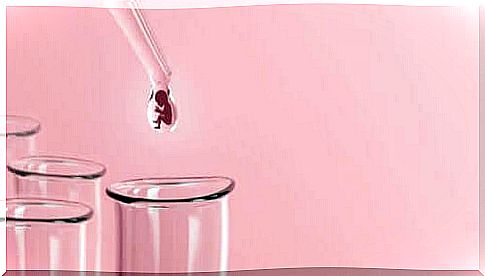Artificial Insemination Helps To Get Pregnant

Artificial insemination is one of the most widely used assisted reproductive techniques. Discover everything you need to know about him.
Artificial insemination is one of the assisted reproductive techniques that enables couples with various reproductive problems to become parents. Do you want to learn more about using artificial insemination to get pregnant?
If so, keep reading. We will try to answer the most common questions.
Artificial insemination: how to get pregnant?

Artificial insemination is an assisted reproductive technique that involves placing sperm that has been previously selected in a laboratory into the uterus. This sperm can come from your partner or the sperm bank.
When a sample is obtained, specialists work on the semen in a laboratory, separating the mobile sperm from the sperm plasma. At the same time, the doctor stimulates the ovaries to increase the chance of pregnancy. Later in this article, we will discuss the step-by-step process of getting pregnant using artificial insemination.
What does the whole process look like?
Unlike in vitro fertilization (IVF), fertilization with artificial insemination takes place in the uterus. For this reason, doctors take certain precautions to increase your chances of becoming pregnant:
- Doctors select the best sperm from a sample that may belong to a partner or come from a sperm bank.
- The doctor stimulates ovulation to make sure it does happen.
- It monitors the time of ovulation to help choose the best time for fertilization.
- The doctor conducts fertilization a few hours before starting . As a result, the sperm is already in the woman’s body when the egg is released.
- Monitors progress to confirm pregnancy.
What distinguishes such a pregnancy from a natural pregnancy?
Is there any difference between a natural pregnancy and a pregnancy induced by artificial insemination?
No, there is no difference other than how fertilization occurs. This means that apart from the insemination process we just described, the artificial insemination pregnancy and the natural pregnancy are exactly the same.
To calculate the starting date of pregnancy, you must subtract 14 days from the date of fertilization. This will ensure that the embryo develops within the same weeks as pregnancy without medical intervention.
What is the risk of miscarriage?

Between 10 and 20% of all pregnancies are missed, and artificial insemination does not increase the risk of miscarriage in any way. In addition, the older a woman is, the greater the risk of losing pregnancy (approximately 35% at age 35, 40% at 40, and 80% from 45 years of age and above).
Most miscarriages occur before week 12 of pregnancy due to chromosomal problems, missing embryo, fetal death, moles, or growth of the mole in the uterus (abnormal growth of the placenta).
What should I do when using artificial insemination to get pregnant?
Getting pregnant with artificial insemination does not mean that you need to take any exceptional measures beyond those recommended for each pregnancy. In fact, as mentioned before, a pregnancy induced by this technique develops in exactly the same way as a pregnancy that occurs naturally.
For this reason, you should follow your doctor’s guidelines, have regular gynecologist checkups, blood and urine tests, and ultrasound examinations at certain times. If the triple test shows disturbing results, an amniocentesis will be ordered.
When does the public health service take control of artificial insemination?
You’ve probably wondered if you live in a country with a public health system. The answer to them depends on the laws of your country. For example, in Spain, social services take control of the artificial insemination process when:
- The woman is up to 40 years of age and the man is up to 50 years of age at initiation of therapy.
- They proved that they have a problem with getting pregnant. This means that the couple has undergone fertility tests which revealed the existence of a specific problem.
- The couple have no children or the child suffers from a serious illness. Another situation where the costs of therapy are covered by the state is when one of the partners did not have children.
- Generally speaking, the state allows for three approaches, although this depends on the laws of a given autonomy.
- Neither partner suffers from a serious medical condition that may be hereditary.
If you and your partner have problems conceiving, see your doctor. They will certainly order a series of tests to determine if you have a fertility problem and whether artificial insemination will be able to help you.









